It’s summertime. The living is easy and the vegetable garden is in full swing. Not my garden — we just moved into a new place last week — but the local farmers’ market is keeping us stocked with fresh produce. So much produce, in fact, that we’re having trouble eating it all. So what to do with extra produce? Why, pickle it, of course!
I made Dilly Beans a few weeks ago — the green bean version of dill pickles. Yum!
Buuut then a couple of weeks ago I had these delicious beans, but no dill with which to pickle them. So I found a recipe for Szechuan Beans in the super fun canning cookbook Put ’em Up! by Sherri Brooks Vinton (and brought to me by my wonderful friend Meredith). Mmmmm….
Buuuut of course I had to change a few things, because of course I didn’t have all of the ingredients. I didn’t have cider vinegar, for example. I did have Basalmic. But did it stop me from trying the recipe anyway? Of course not. Or did I bother going to the store to pick up the other ingredients? Well, what is the fun in that?
And thus was born Sweet and Sour Pickled Green Beans. They’re a little sweet, a little salty, and a lot of tang. If you love the sourness of vinegar, you’ll love these beans.
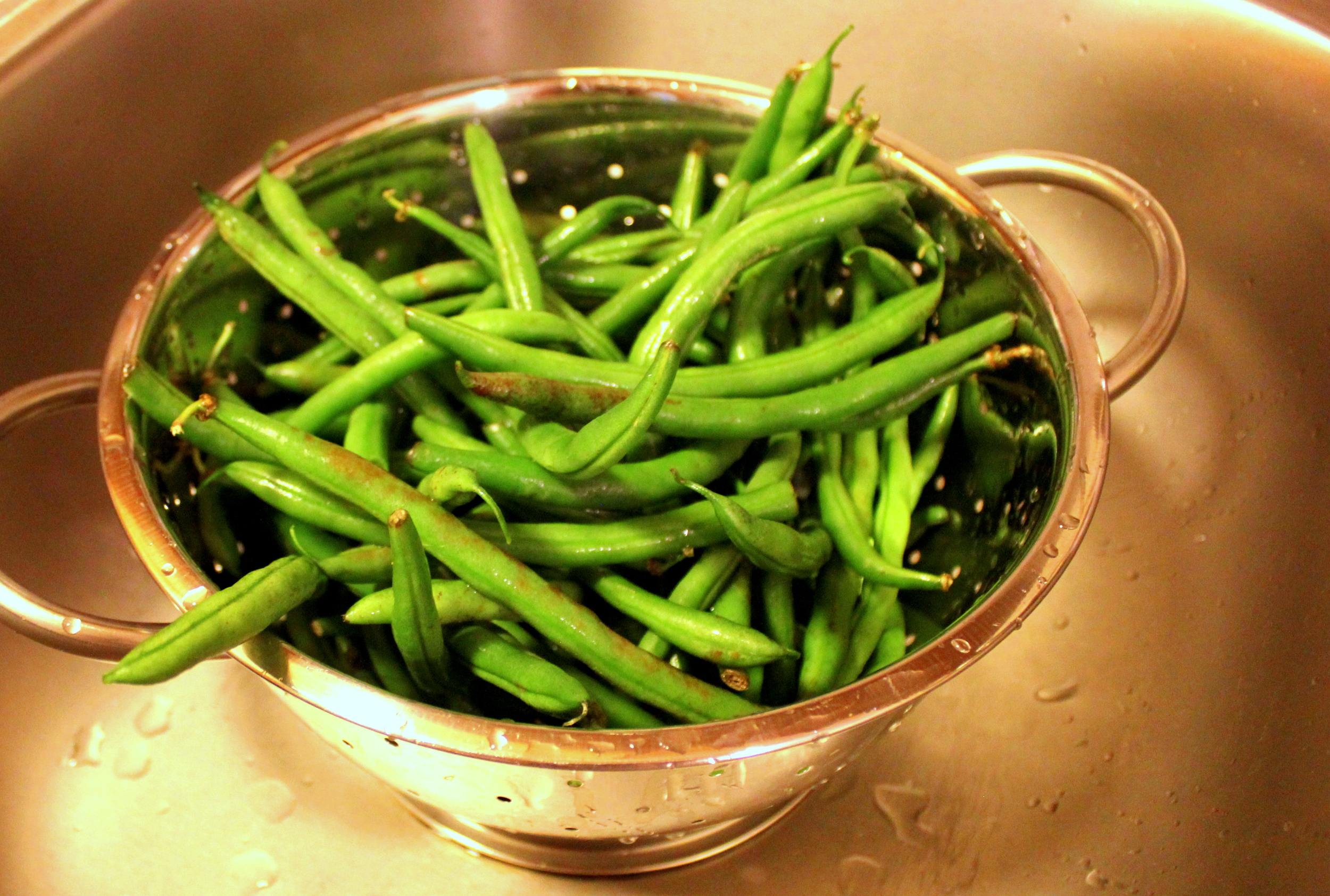
Fresh from the Farmer’s Market! Shout out to Miller Farms in Northern Colorado
Vinegar. Vinegar is all the rage these days. Have you heard? Vinegar, fermented foods, and home canning. Or maybe that’s because I’m friends with a bunch of hipsters who grow their own food (looking at you, Amanda). These kind of friends are the best… and eating dinner together is always great.
Since ancient times, vinegar has been a popular remedy of all types of ailments, from cleansing wounds to curing ear infections. Lately, vinegar has been getting more attention (and I’ve been getting lots of questions) about its use for helping to control blood glucose levels in people who have diabetes.
I mean, vinegar is delicious: marinades, salad dressings, pickled foods… but is taking a spoonful of vinegar with your dinner doing you any good?
There have been many studies trying to answer this question, specifically in relation to blood sugar. And there does seem to be an effect of vinegar. If you’re a real nutrition nerd like me, take a look at this great review (or this How Stuff Works article) about vinegar that explains some of the ways that vinegar (specifically its active ingredient, acetic acid) affects blood sugar.
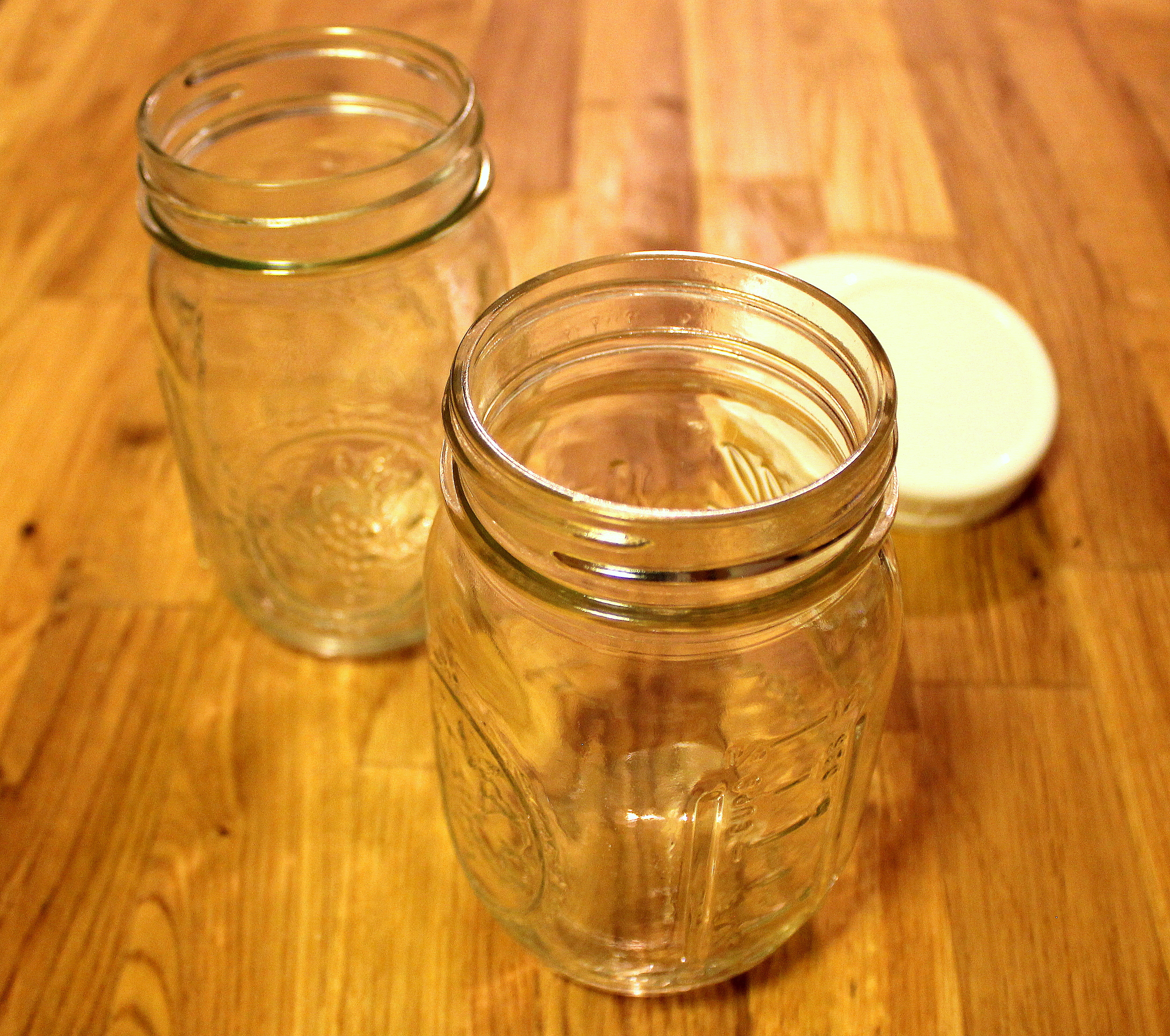
The jars are ready for the beans!
For those less nerdy, here are some of the main ways it might work:
-
Slow down how fast your stomach digests food, thus slowing down how fast glucose can enter into your blood
-
Blocks some of the carbohydrates that you eat from being absorbed into your blood (although this is controversial, with some studies showing no effect)
-
Helps your body use the insulin your body makes — thus helping your body’s cells to better take up sugar from your blood and lower blood sugar (reduces insulin resistance — see this study)
-
Lowers the amount of insulin your body makes (thus helping reduce the over-production of insulin, seen in early stages of type 2 diabetes and pre-diabetes)

Hang on a minute more and we’ll be ready to blanch!
The implications are really exciting — what a great, natural way to help control blood sugar levels! So why hasn’t your doctor recommended that you start taking a spoonful of vinegar with dinner? Well, we have a lot more to learn. Like how much vinegar does it take to make a difference? or are there any harmful side effects from taking vinegar? Remember, the part of vinegar that is active is acetic acid — too much acid isn’t a good thing for the enamel on your teeth or the lining of your esophogus.
The truth is, it takes a while for new ideas to enter the realm of medical recommendations because the first rule of medicine is do no harm. Ask your doc about it. He/she is probably aware about the claims related to vinegar, but also knows that there is more research to be done. At the risk of putting you in danger (or even just wasting your money), most healthcare professionals won’t be touting nutritional supplements or get-skinny-quick schemes.
The moral of the story is, if your second cousin’s wife’s friend tells you about the latest, greatest new supplement (natural, over-the-counter, or otherwise), check with your doctor or Registered Dietitian before buying. As for vinegar? Help yourself to vinegar in foods! But with the current research, I can’t yet in good conscience give you any recommendations to take a tablespoon with your next meal.
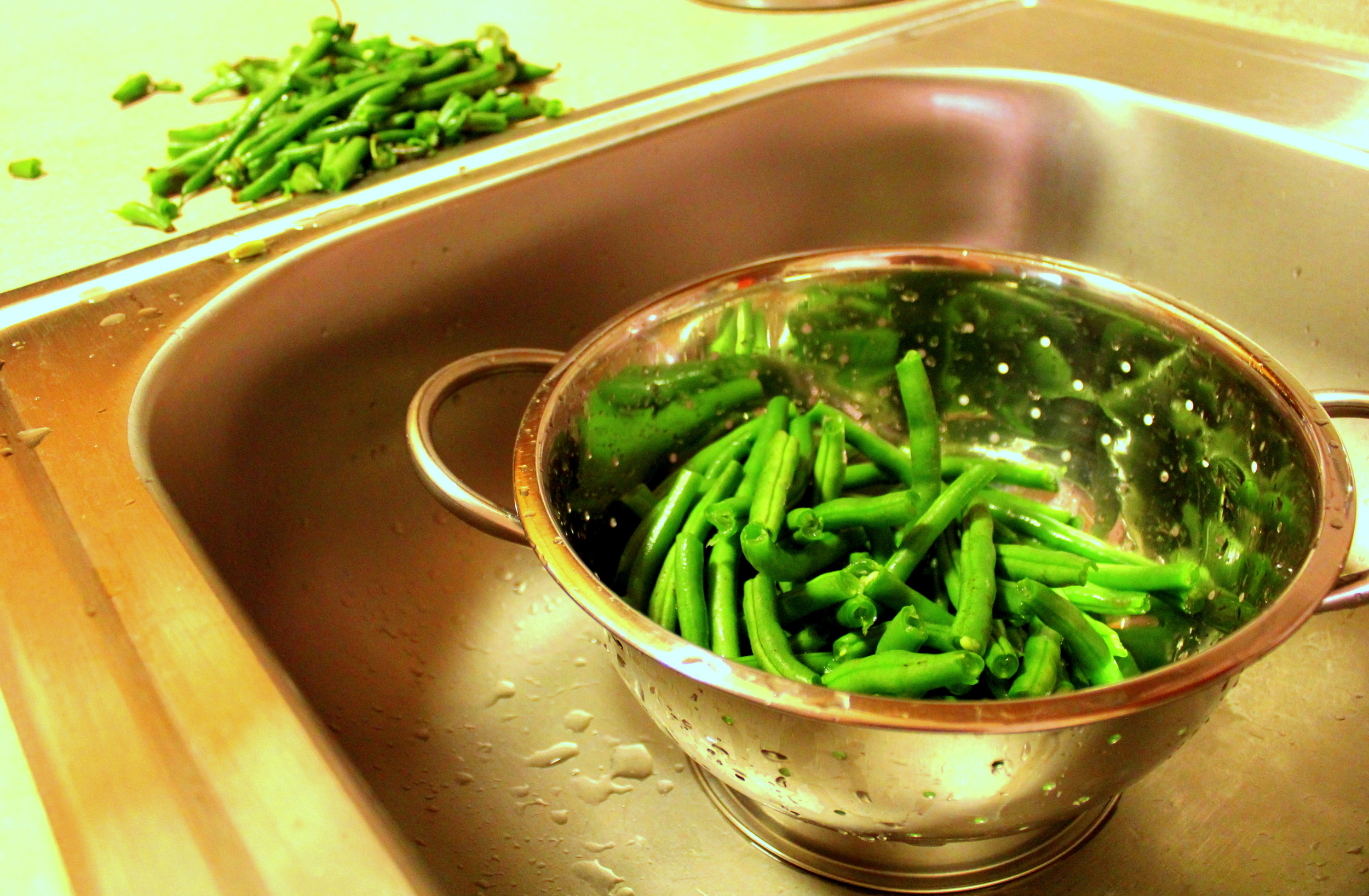
Washed and ends trimmed!
Alright, enough about vinegar. Let’s get to pickling.
Wash your beautiful beans and snap off the ends. If they’re really long (as in, they won’t stand up straight in the jars), then snap them in half. You can also use a knife to cut off the ends, but snapping them is much more fun.
Now get ready to blanch! Heat a large pot of water to boiling (about 2 quarts, enough so that it’s easy to submerge your beans). Once it’s at a rolling boil, add the green beans and blanch for one minute.
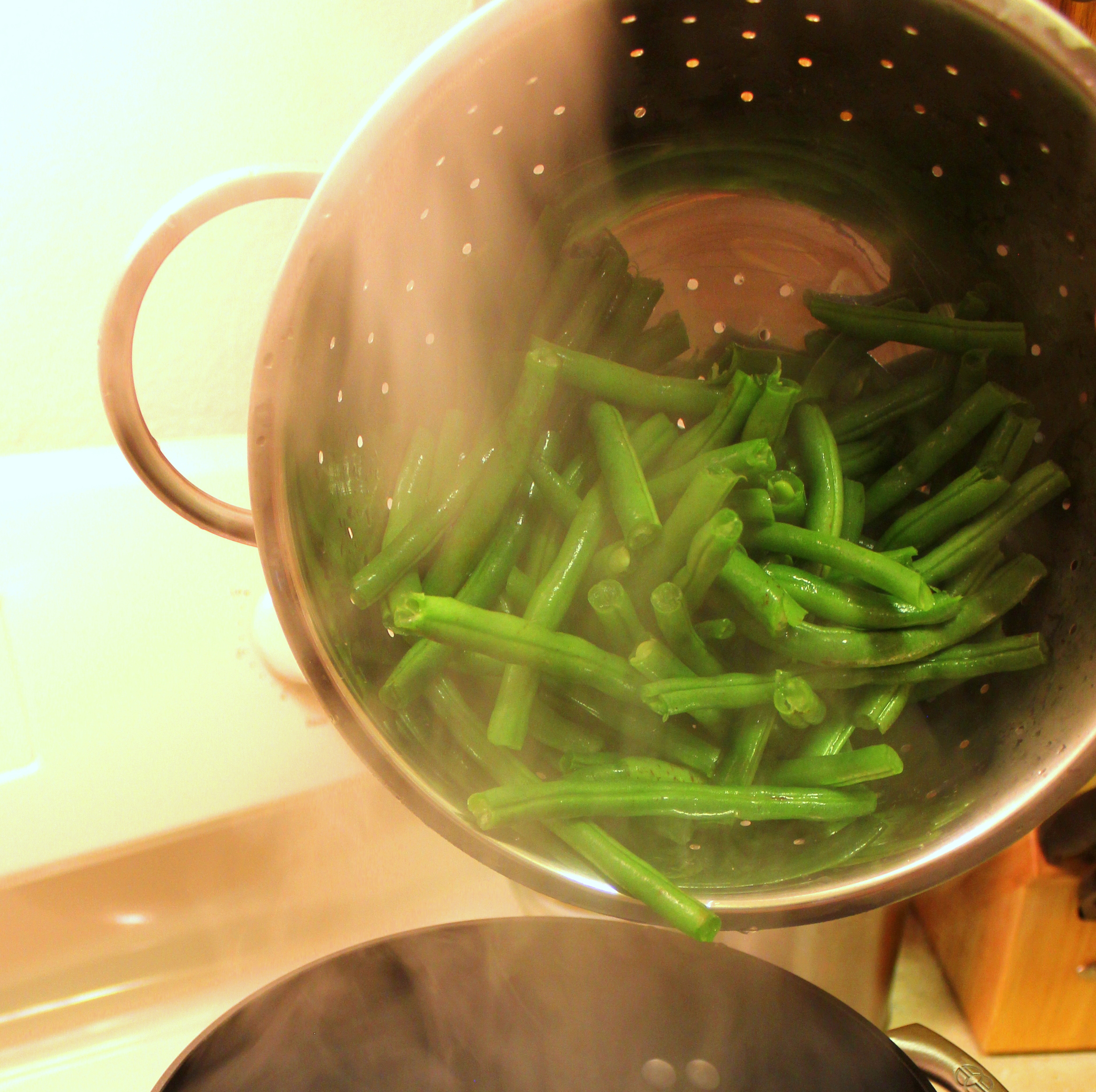
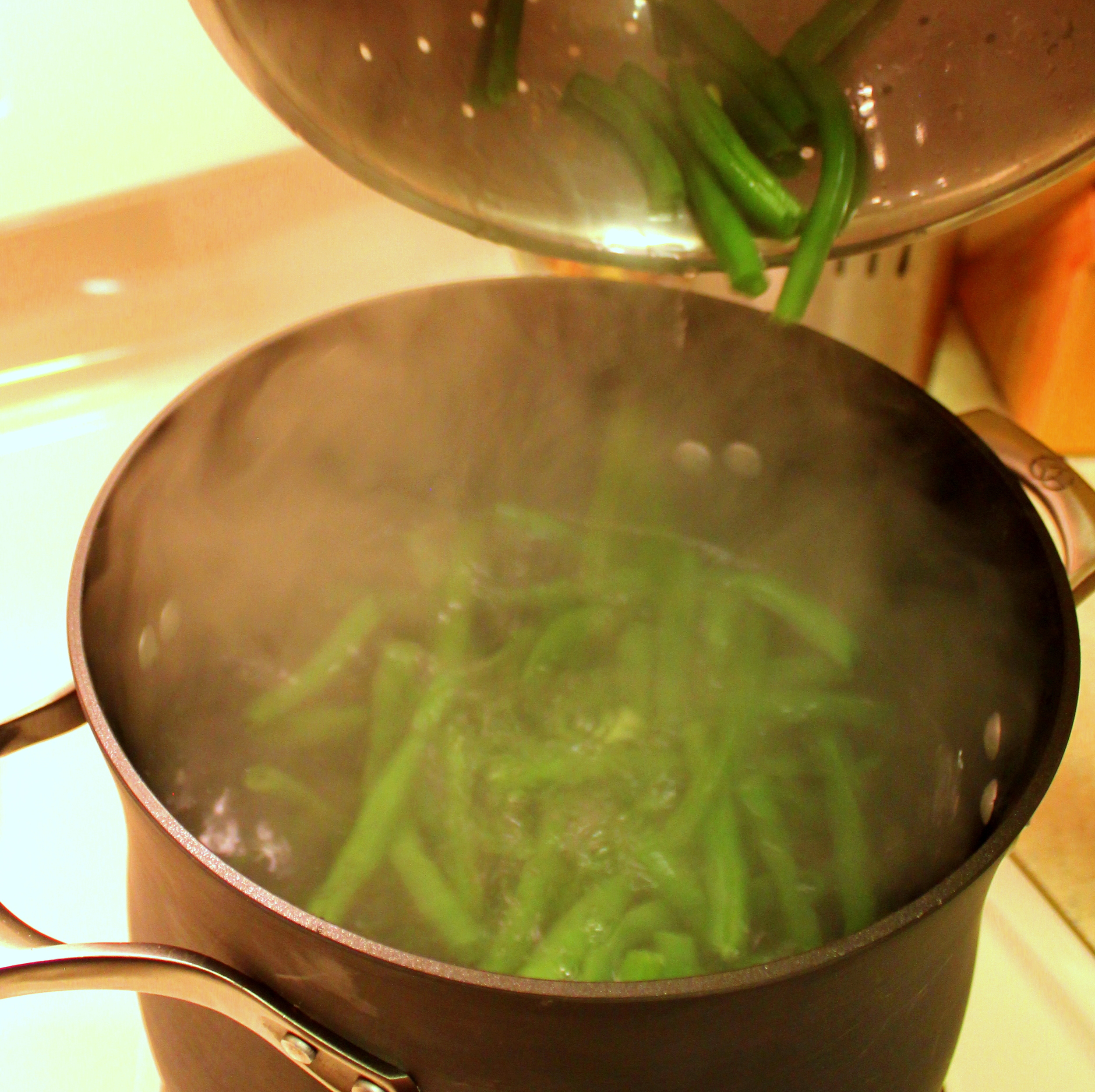
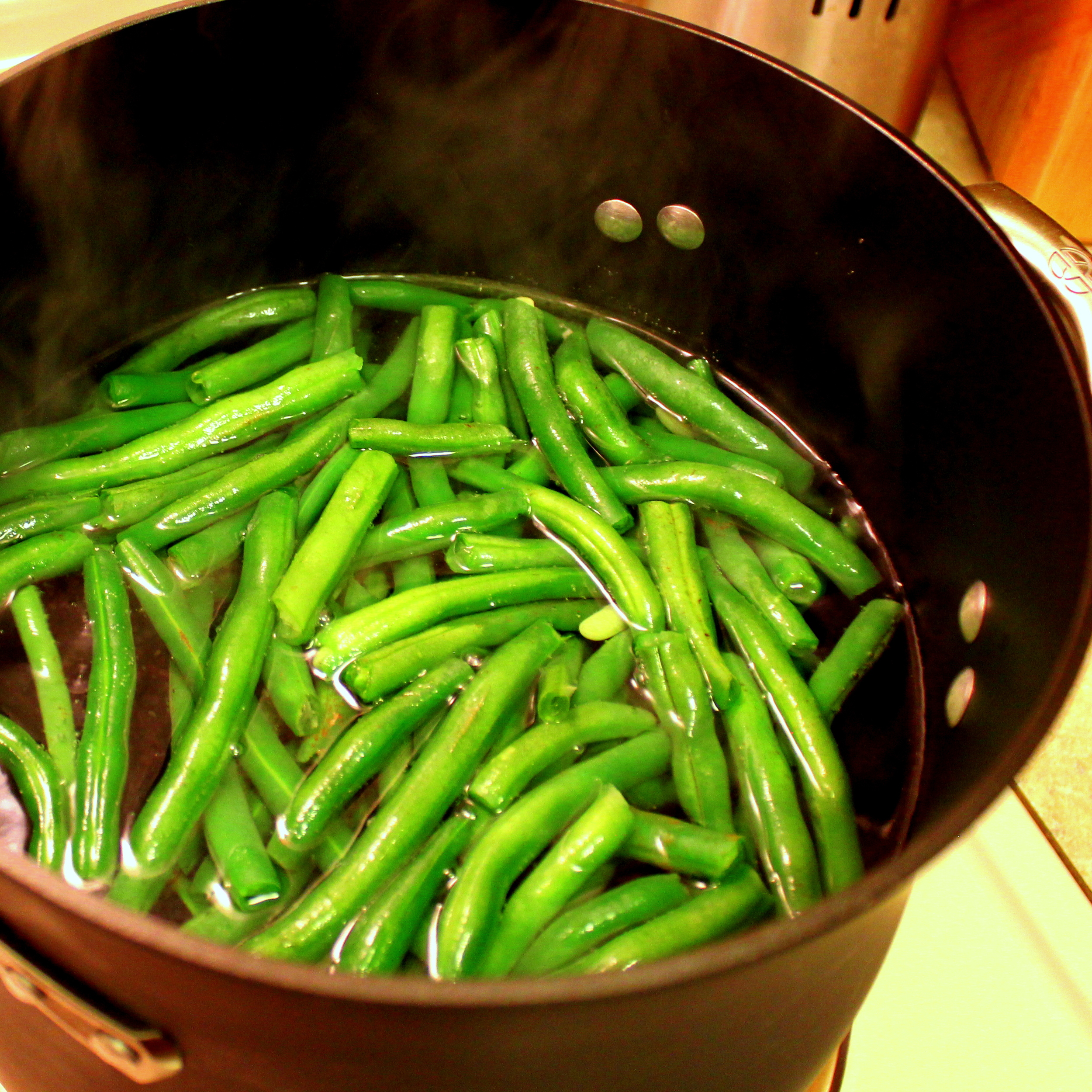
Meanwhile, prepare an ice bath by dumping ice and cold water into a large bowl. When the minute of blanching is up, drain your beans…
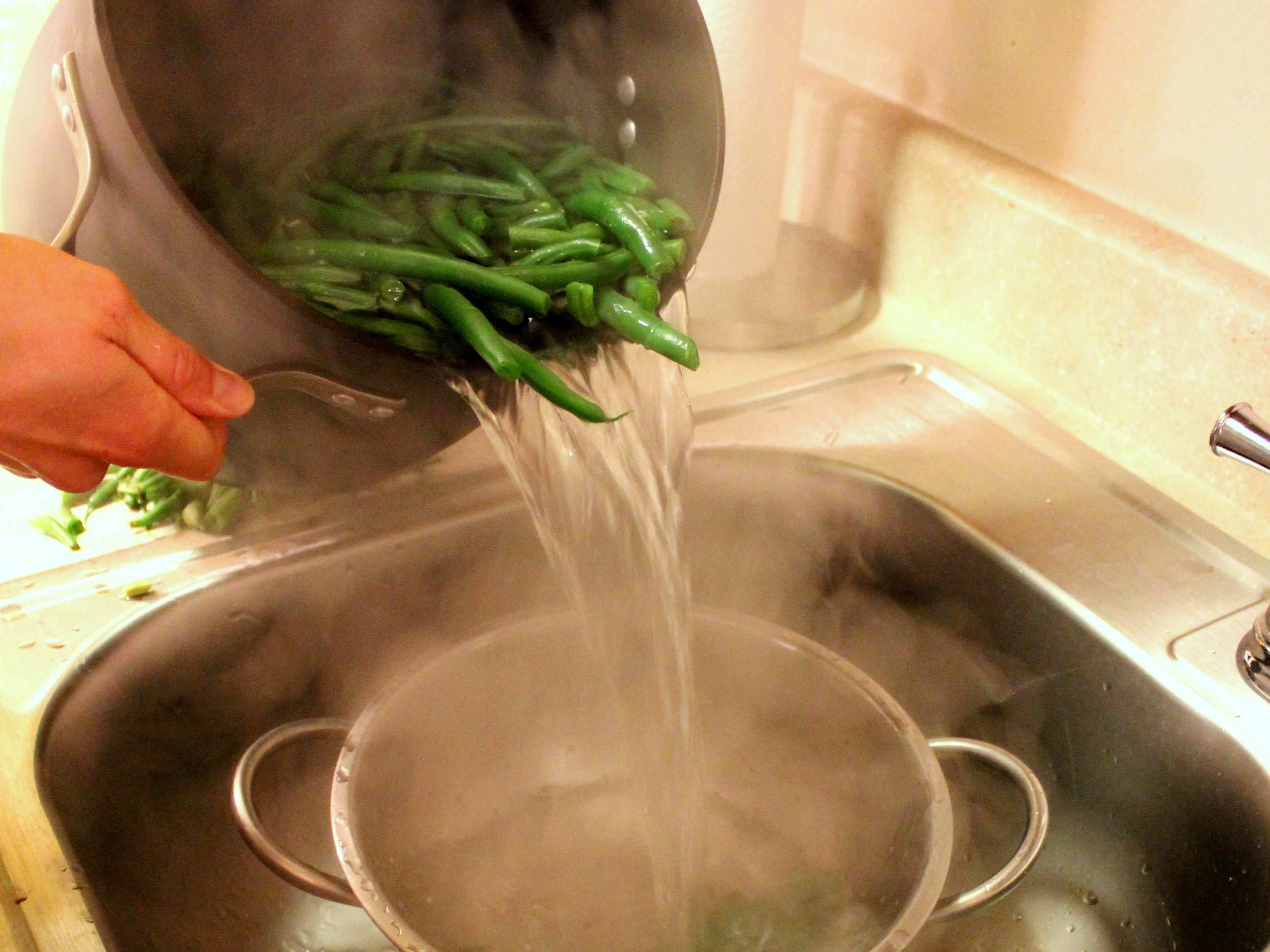
…and pour them into the ice bath to quickly cool them.
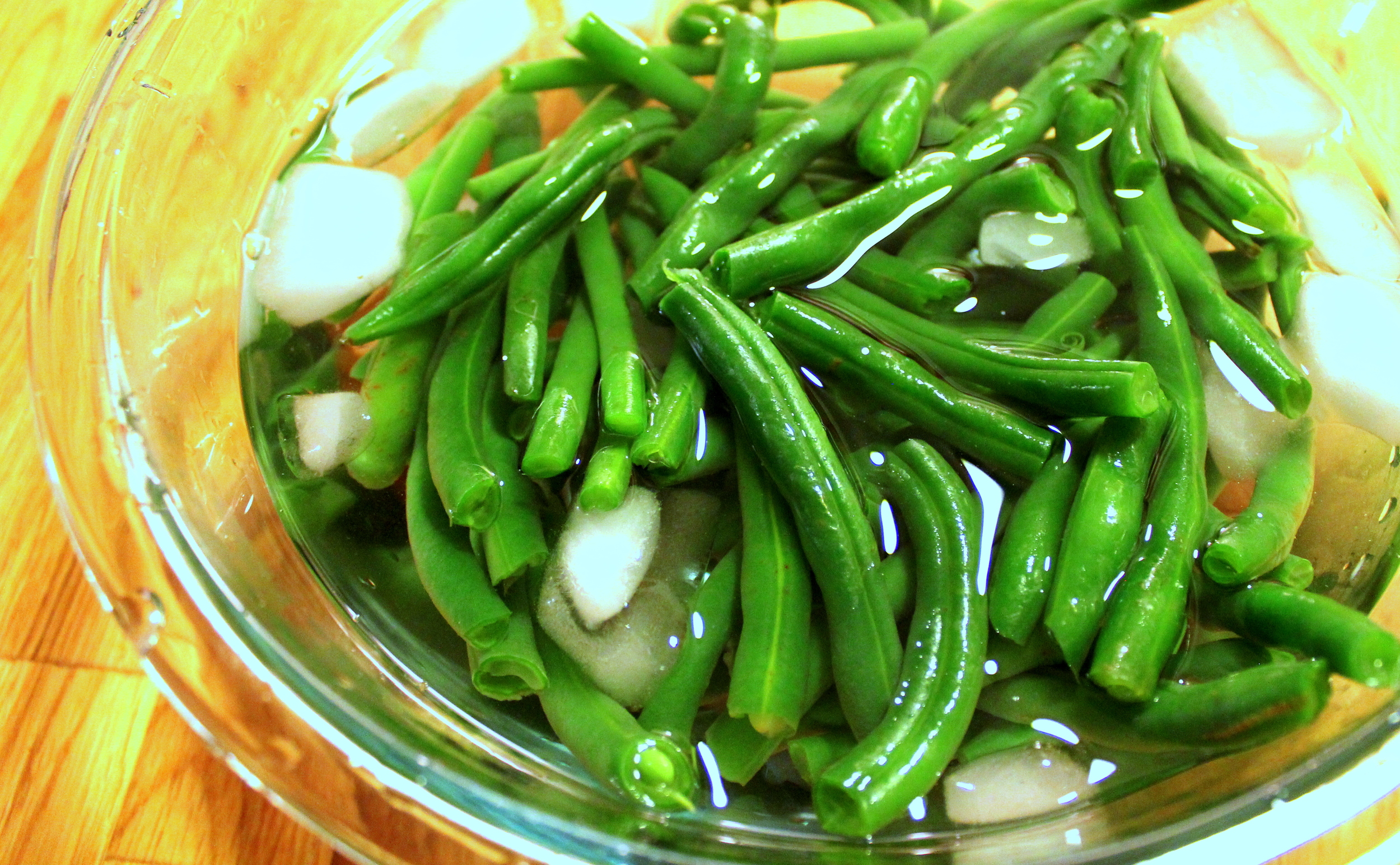
Ever-so-cold ice bath for extra-fast cooling
Next, peel and slice two garlic cloves and a one-inch square of fresh ginger. To peel garlic, first smash it with the flat blade of your chef’s knife. You will easily be able to shed the outer layer and slice your garlic.

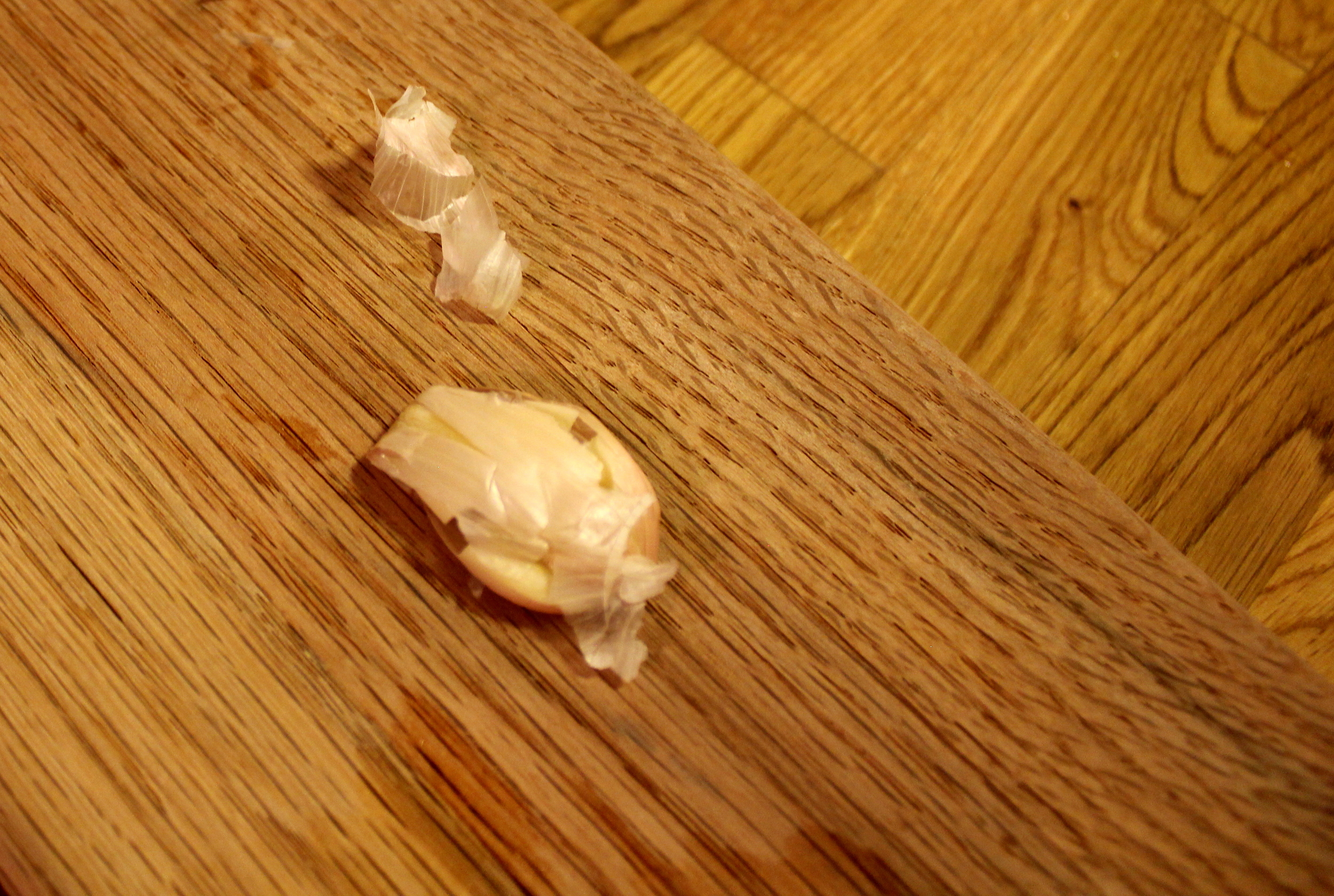
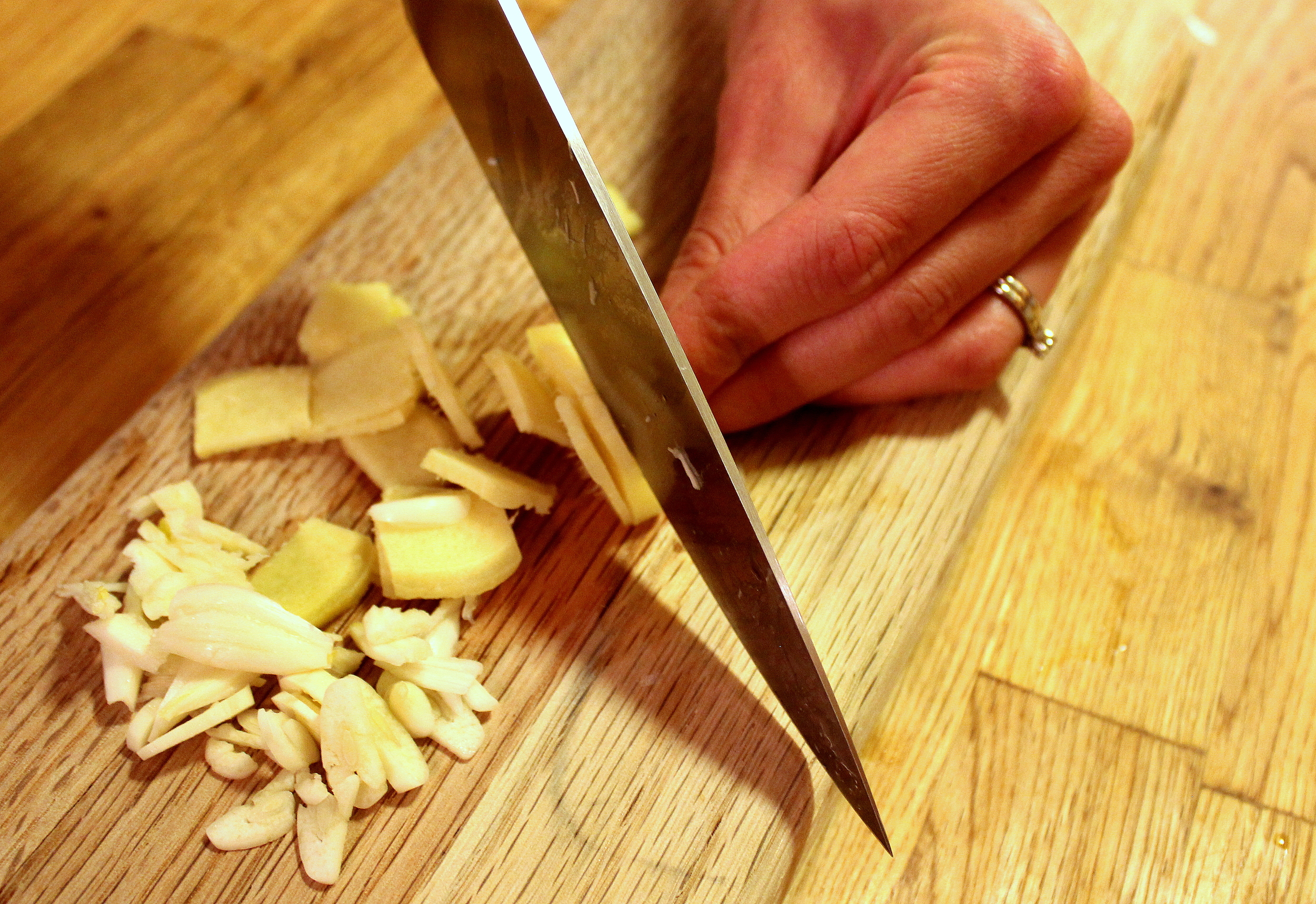
Now for the ginger. Fresh ginger is one of my favorite ingredients. I have found the easiest way to peel ginger is to use the edge of a regular spoon, as shown below. Then slice thinly.
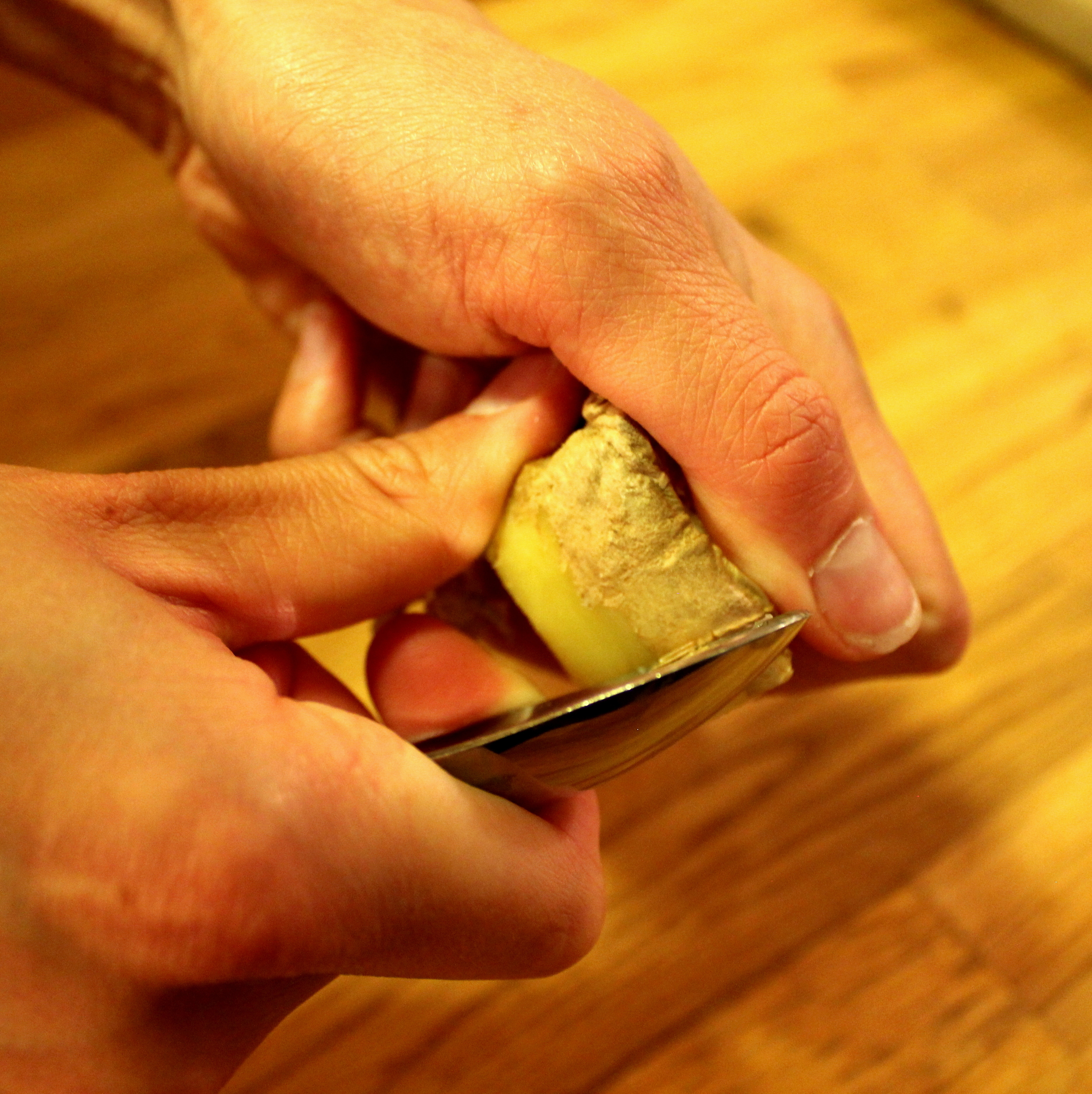
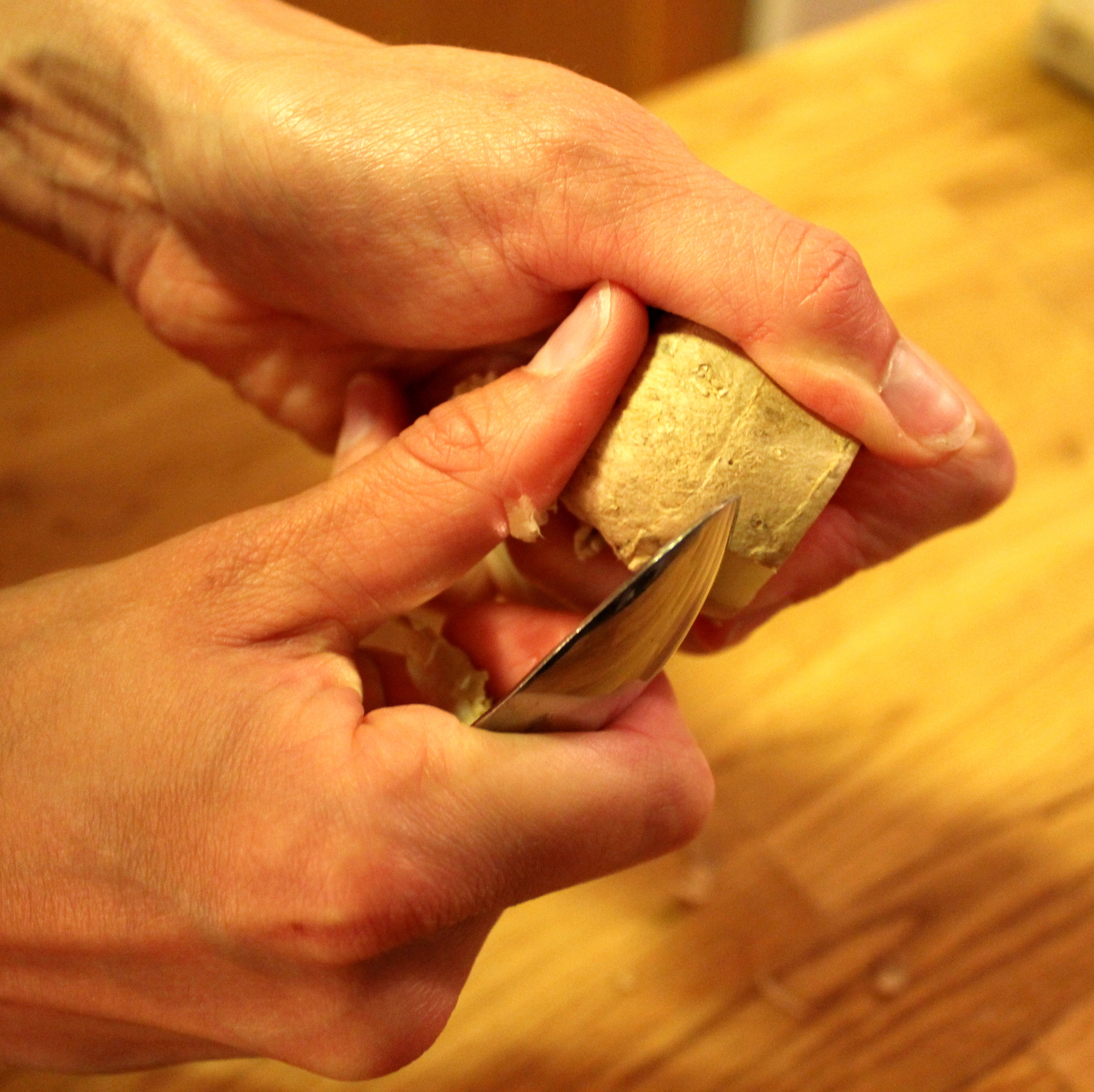
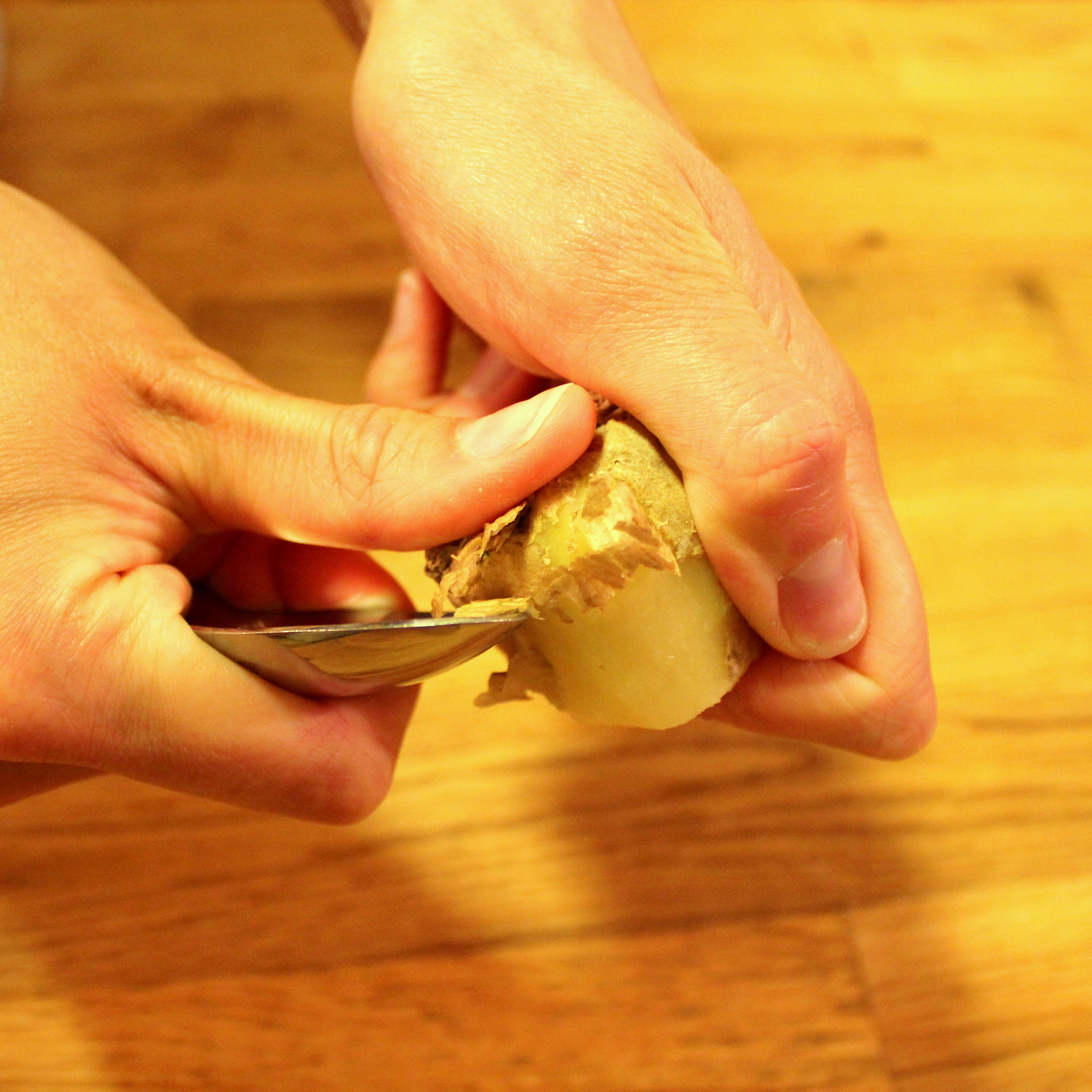
Pack the beans in the jars, tightly, and standing on end. Then add the ginger, garlic, and one tablespoon of whole black peppercorns to the jars.
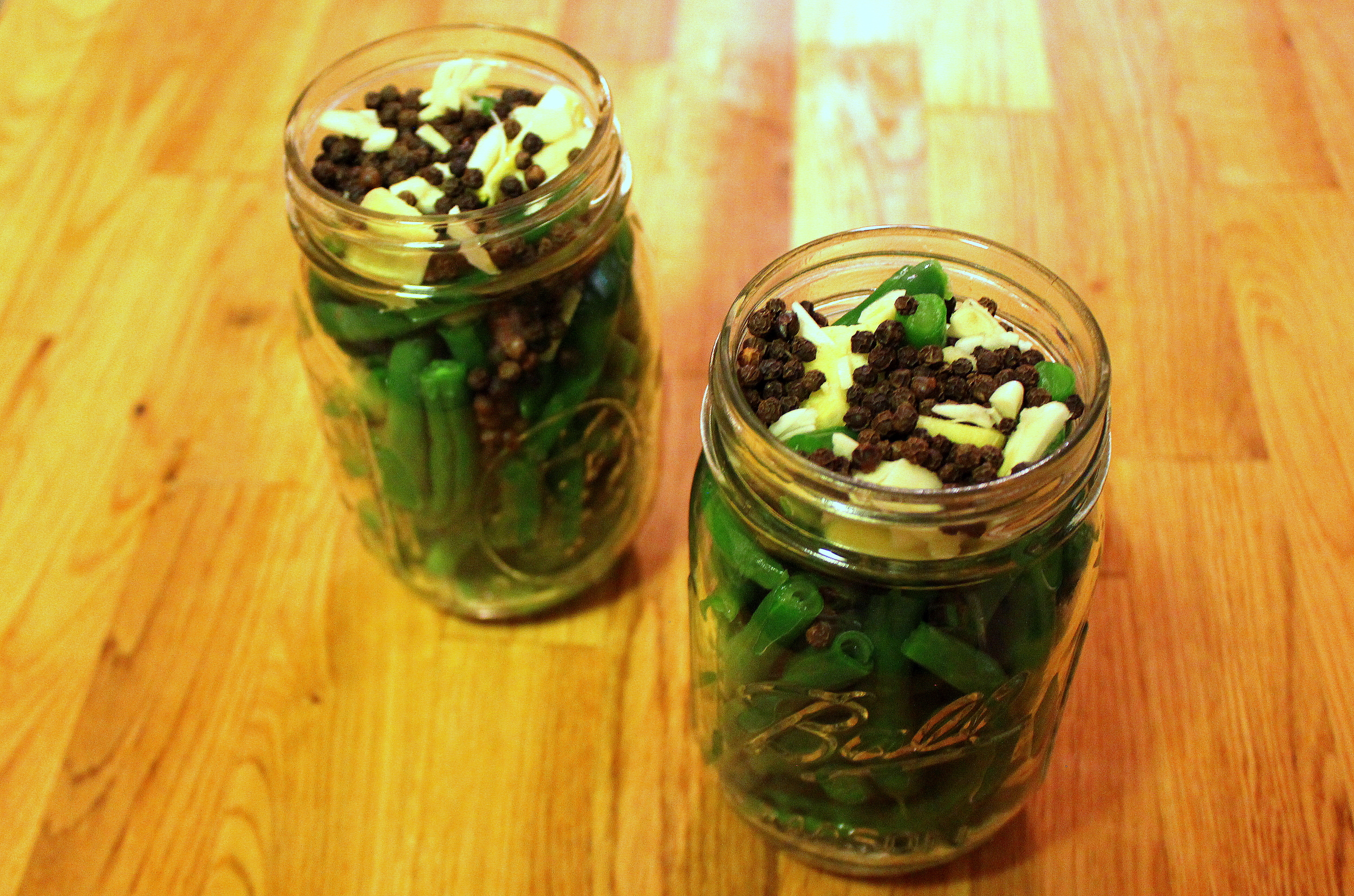
In a separate bowl, mix 1 cup basalmic vinegar, 1/2 cup water, 1/4 cup soy sauce, and 1/4 cup sugar. Once the sugar dissolves, pour mixture into jars over the green beans. The liquid should cover the beans, but leave about 1/4-inch of air space at the top. Okay, so mine didn’t have any airspace (I attribute my constant over-flowing pots, pans, and jars to my optimistic nature), but it seemed to work out fine for me!
Put lids on your jars and put them in the fridge for a couple of days to pickle. Refrigerate for up to one month. Enjoy!
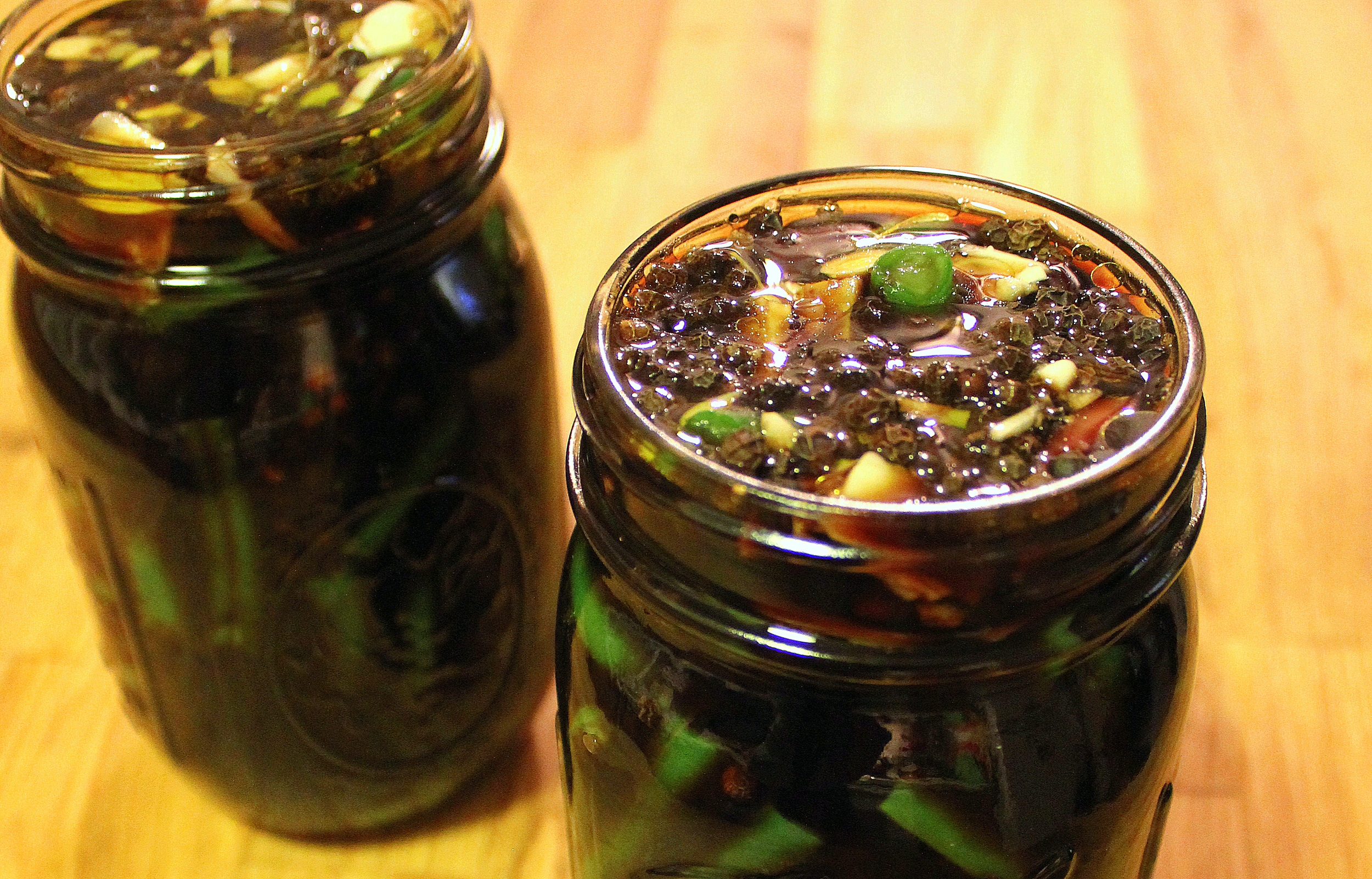
Sweet and Sour Pickled Green Beans
Ingredients:
-
4-5 c. fresh green beans
-
1 c. basalmic vinegar
-
1/2 c. water
-
1/4 c. soy sauce
-
1/4 c. sugar
-
1 Tbsp. whole black peppercorns
-
1-inch cube ginger
-
2 garlic cloves, sliced
Instructions:
-
Wash green beans and snap off ends.
-
Bring 2 quarts water to a boil — enough to fully submerse beans.
-
While water comes to a boil, prepare an ice bath in a large bowl.
-
Add green beans to boiling water and blanch for one minute.
-
Drain beans, then add to ice bath to cool quickly. Stand beans on end in clean pint jars and add spices on top.
-
In separate bowl, combine vinegar, water, soy sauce, sugar. Stir until sugar dissolves, then pour over green beans, enough to cover, but leaving about 1/4-inch space at the top of the jar.
-
Put lids on your jars and put in the fridge. In 2-3 days, enjoy your pickled green beans! Keep in the refrigerator for up to 1 month.
Serves 16 – Serving Size: 4-5 green beans – Nutrients per serving: 30 calories — 0g total fat — 0g saturated fat — 0 mg cholesterol — 60 mg sodium — 7g total carbohydrates — 2g fiber — 1g protein
7 thoughts on “Sweet and Sour Pickled Green Beans”
Those are some great photos. The precision of ginger peeling!
Thanks, Amanda! Along with learning to blog, I’m learning about photography. The photo cred for the ginger peeling goes to Ethan. He’s stellar.
I never thought of preparing green beans this way; worth a try. Very interesting information – is there a difference in fermenting or pickling? A friend of mine asked about okra and it’s ability to lower blood glucose levels if it is prepared a certain way. Any ideas on that?
Great question! I think fermentation vs. pickling deserves a post of its own. I’ll put it on the list! And okra? Hmmm, I haven’t heard of that in the context of lowering blood glucose levels, but I’ll do a little research. Thanks for the tips!
Can you home can these green beans?
I personally have only used these as refrigerator beans and haven’t home canned them. If you want to can, I’d make sure to use a balsamic vinegar with acidity of at least 5%.
I love sour and sweet pickled green beans. The recipe is pretty easy.